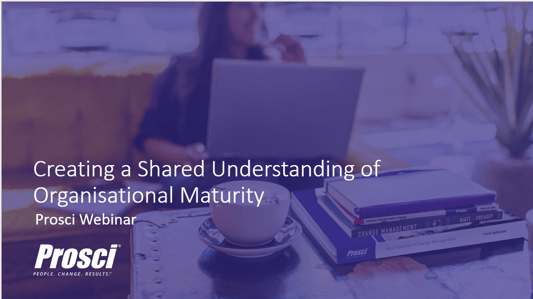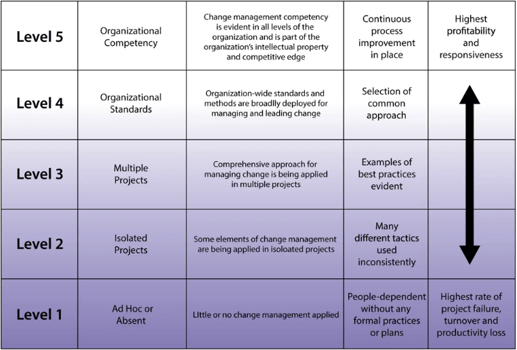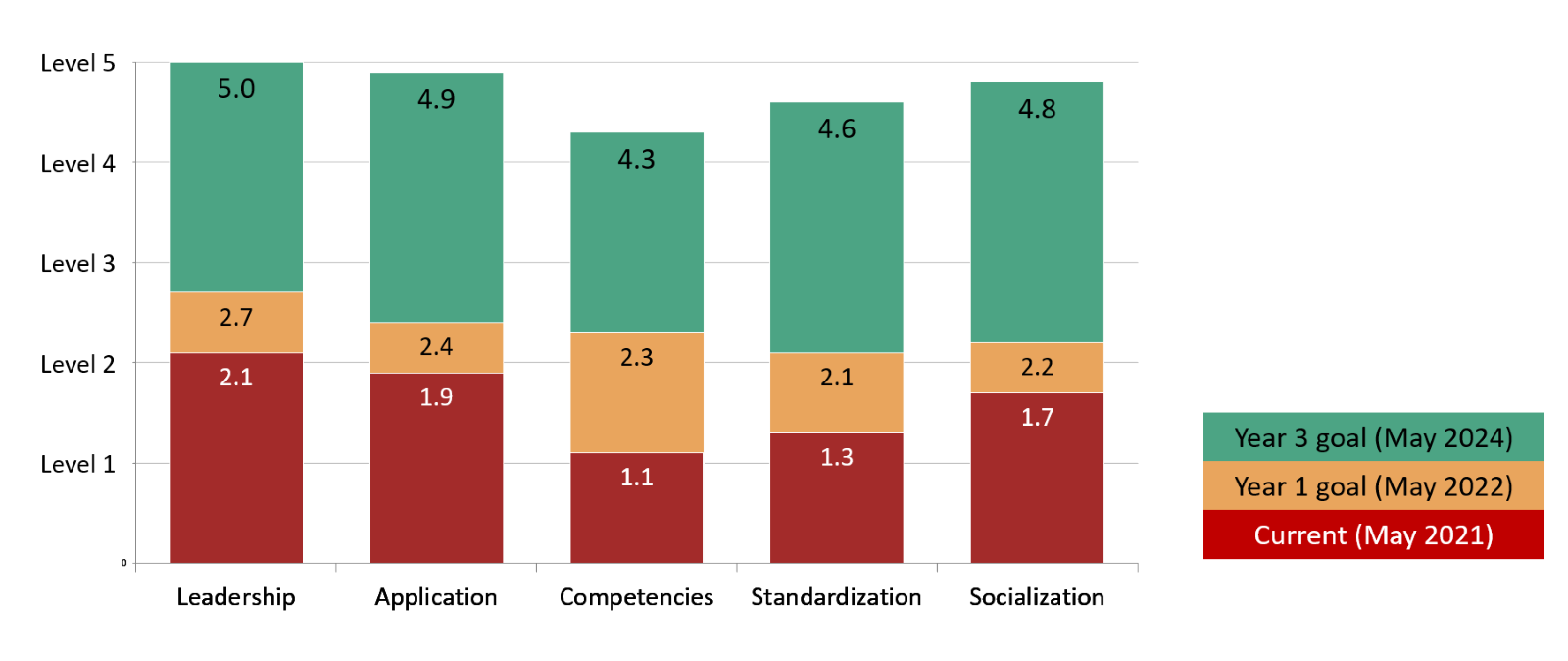Two words: RAPID. CHANGE. Perhaps you're tired of hearing about change, its increasing volume, complexity, pace, blah blah. Although I'm sure you would agree that a glance at the broader context, whether economic, political or environmental, will immediately reinforce the proposition that we really are in an 'AI enhanced' VUCA (Volatile, Uncertain, Changing & Ambiguous) world. Perhaps this article is AI generated? I guess we may never know.
75% of participants in Prosci's 12th Best Practices' study (released in 2023), reported that their organisations were nearing, at, or past the point of saturation. If it wasn't already clear, this data reinforces the fact that organisations are facing an imperative to develop their ability to adapt to change.
What is Enterprise Change Management (ECM)?
The discipline of change management has evolved over several decades. From what was sometimes a casual, after-the-fact approach, occasionally accompanied by a communication plan and/or training plan (and the inevitable stakeholder matrix) to a point where change management now includes holistic, structured processes with complete toolsets focussed on the people side of change at an individual or project/programme and an organisational level.
Enterprise Change Management (ECM) considers the extent to which the ability to manage change exists within the DNA/fabric of the organisation. From an ECM perspective, managing the people side of change extends beyond the application of processes and tools within individual projects, to establishing change management as a core competency and cultural value within the organisation.
WATCH: Creating a Shared Understanding of Organisational Maturity
What does successful Enterprise Change Management look like?
In an organisation that has successfully institutionalised change management, three things happen:- The organisation consistently applies common change management processes and tools.
- People from the very top of the organisation to the front line possess the individual competencies required to lead change; and
- The application of change management is a strategic capability.
Why is it Important?
The outcomes our organisations are ultimately striving for - increased market presence, revenue, profit, sustainability - this is REAL success. Given that building Enterprise Change Management should ultimately support the attainment of overall business objectives, it is important to keep this in mind when considering how we measure ECM success. The value of a successful change management approach is questionable (possibly irrelevant?) in the context of a failed organisational change!
How will you measure success?
Measuring success needs to consider the attainment of overall organisational objectives, along with the successful building of ECM capability. And of course there should be a direct connection between these objectives.
The measurement of success in relation to building ECM can be described with the five capability areas which constitute Prosci’s change management maturity model.

These capabilities include:
- Leadership, focusing on the specific leadership activities around the building of change management capabilities and competencies. This is not a general description of leadership and sponsorship in the organisation, and focuses on the leadership commitment, activities and messages around the importance and value of change management, and the effort to build organisational capabilities and competencies.
- Application, which focuses on the evaluation of the application of change management processes and tools on projects and initiatives across the organisation. Factors for evaluation include the percentage of projects applying change management, extent and breadth of application across the organisation, and resource availability (both people and funding) for applying change management on projects and initiatives.
- Competencies, which considers the training, development and demonstrated competencies required from the key groups that must apply change management tools and principles.
- Standardisation which considers the mechanisms and systems that can be used to institutionalise change management, and includes the use of a common approach, integration with project management, creation of triggers for change management, and inclusion of change management in other improvement approaches.
- Socialisation, which focuses on building commitment and buy-in for change management throughout the organisation.
Where to start?
Firstly, it’s important to acknowledge that overall business performance is clearly the ultimate objective, one that both change practitioners and business stakeholders alike are interested in.
It is possible to link change management performance with overall organisational performance at two levels:
- At an initiative level: having considered the extent to which the key initiatives depend on employee adoption and usage, the contribution of the human specific factors that drive return on investment (namely Speed of Adoption, Ultimate Utilisation and Efficiency) establish solid people-specific data points.
- At an organisational level: assessing the performance of the organisation against its overall strategic objectives would require measuring performance against these objectives at a programme/project level. Metrics across a range of financial and non-financial data items (typically including measures across these four dimensions: Financial, Customer, Internal Process, and Learning & Growth) help us to assess overall organisational performance.
The correlation between enhanced enterprise change management capability and overall organisational performance would clearly require considering interdependencies and correlating factors, including:
- Alignment of the timelines of the change management capability building effort with the project and programmes focussed on driving organisational performance
- The extent to which the overall outcomes of each initiative depend on employee adoption and usage
So in the short term, you can start by assessing your organisations current level of change management maturity. Prosci's Change Management Maturity Model Assessment (CMMMA) tool can be applied to assess maturity across these respective dimensions. An initial assessment would establish a baseline, and the organisation could then target intended growth across these dimensions in relation to the degree of focus which will be applied to addressing each dimensions across a period of time, as reflected in the following graphic:

Interested in developing Enterprise Change Management capability?
Our Enterprise Change Management (ECM) workshop teaches you how to enhance your organisational change management capability. Our interactive, online, Prosci instructor-lead programme is concentrated on how to best internalise change management practices.
The workshop is available both through public open-enrolment and to be delivered privately for organisations.
It is suitable for Change Management professionals, leaders and Directors of Change Management. Get in touch to find out more about dates, options for your organisation and/or how to book.


